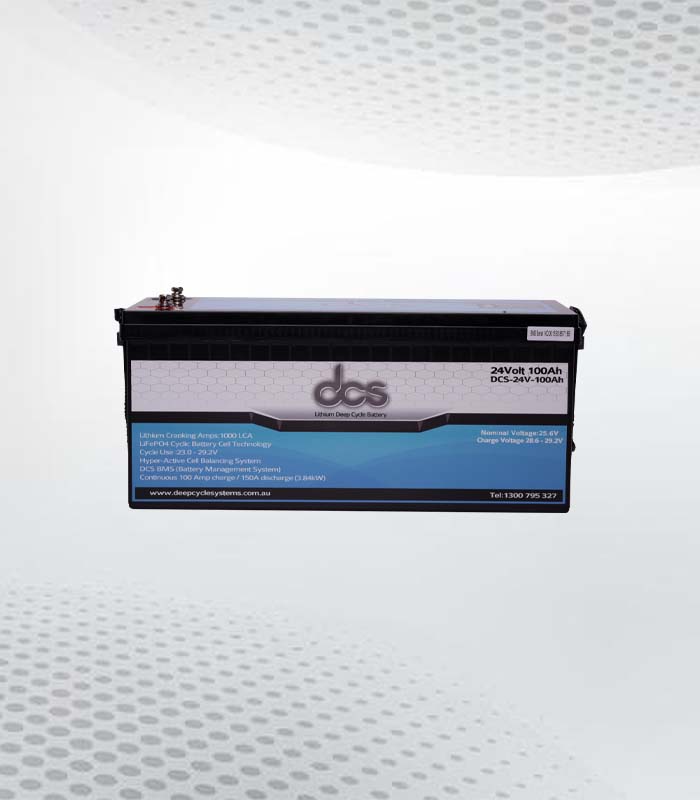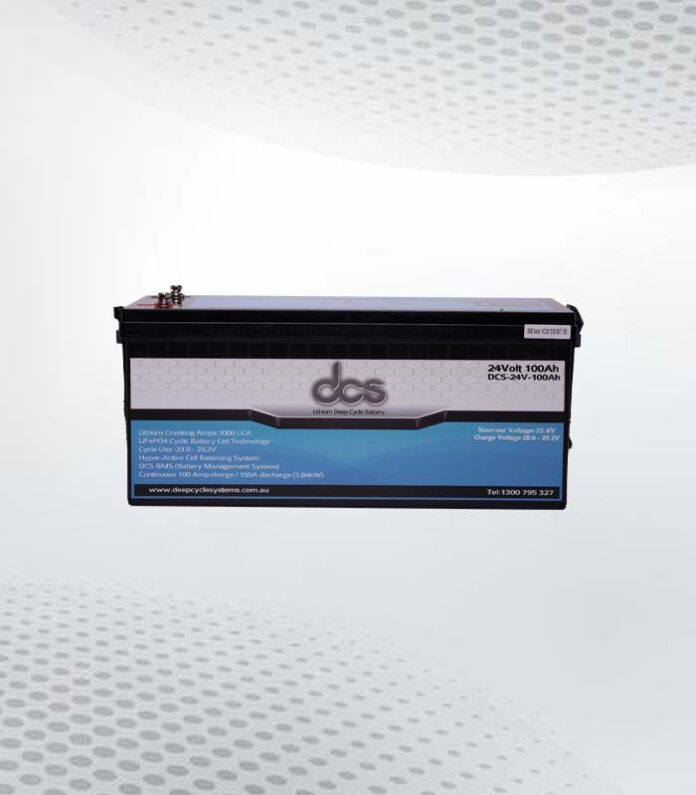Lithium-iron phosphate batteries, also known as LiFePO4 batteries, have gained popularity in recent years due to their numerous advantages over traditional lead-acid batteries. These batteries offer higher energy density, longer cycle life, and better safety features, making them a preferred choice for various applications. This blog post will delve into the dynamics of lithium iron phosphate battery, exploring its advantages, applications, and the future of this technology.
The Advantages of Lithium Iron Battery Over Other Batteries
One of the standout benefits of lithium iron battery is its exceptional cycle life. They can endure up to 2000 charge-discharge cycles, significantly outperforming the approximately 500 cycles that lead-acid batteries can manage. This durability not only extends the usable life of the batteries but also contributes to cost savings over time, as they need replacing less frequently.
Moreover, LiFePO4 batteries boast a higher energy density compared to many alternatives. This characteristic allows them to store a greater amount of energy in a more compact form, an attribute highly valued in applications where space efficiency is critical, such as in electric vehicles and portable electronic devices.
Another crucial advantage is their inherent safety. LiFePO4 batteries are less prone to overheating and are more stable in adverse conditions, thereby reducing the risk of thermal runaway—a common issue with other lithium-based batteries. This safety profile enhances their suitability for a wide array of applications, ensuring they are a reliable power source even under demanding circumstances.
Additionally, these batteries exhibit minimal self-discharge rates, which is pivotal for applications requiring long-term reliability without frequent use. Together, these attributes cement the LiFePO4 battery as a superior choice in the realm of advanced energy storage solutions.
 Understanding the Energy Density and Power Output
Understanding the Energy Density and Power Output
Energy density plays a pivotal role in determining a battery’s suitability for particular applications, and lithium-iron phosphate (LiFePO4) batteries are at the forefront due to their impressive capacity to store substantial energy in relatively small volumes or masses. This high energy density is a key factor contributing to their increased power output.
Consequently, LiFePO4 batteries are exceptionally well-suited for applications demanding significant energy outputs, such as in electric vehicles, where they deliver the necessary power for acceleration and long-range travel without the bulkiness associated with lower density batteries.
Moreover, the ability of lithium-iron phosphate batteries to maintain a consistent power output throughout their discharge cycle is noteworthy. Unlike some battery technologies that experience a noticeable decline in power as they discharge, LiFePO4 batteries provide a stable power level, ensuring that devices and vehicles operate efficiently until the battery is nearly depleted.
In addition to their use in high-performance sectors, the favourable energy density and power output of lithium-iron phosphate batteries make them ideal candidates for grid energy storage solutions. Here, they can store and release large amounts of energy quickly, facilitating the integration of renewable energy sources into the grid by compensating for their variability.
The adaptability of LiFePO4 batteries, driven by their superior energy density and power capabilities, thus marks a significant advancement in energy storage technology.
The Role of Lithium Iron Phosphate in Renewable Energy Systems
Lithium iron phosphate (LiFePO4) batteries are pivotal in the seamless integration of renewable energy sources into our power grids. Their robust energy storage capabilities enable the harnessing of solar and wind power, assets that are inherently variable in nature.
By storing excess energy generated during peak production times, these batteries ensure that the supply remains constant, even in periods when direct sunlight or wind is not available. This reliability is crucial for maintaining the balance between energy supply and demand, thereby facilitating a more stable and reliable grid.
Furthermore, the application of LiFePO4 batteries in renewable energy systems significantly contributes to the reduction of carbon emissions by supporting a shift away from fossil fuel-dependent energy sources. Their longevity and efficiency make them an ideal choice for long-term energy storage solutions, essential for the sustainability of renewable energy infrastructures.
The role of lithium-iron phosphate in renewable energy systems not only exemplifies their importance in today’s energy transition but also underscores their potential to be a cornerstone in the achievement of a greener, more sustainable future. Their integration with renewable sources exemplifies a forward step in our endeavour to mitigate climate change impacts, making a profound contribution to global energy sustainability goals.
Applications of Lithium-Iron Phosphate Batteries
LiFePO4 batteries, renowned for their high energy density, durability, and safety, have found their place in an impressive array of applications, transcending traditional limitations.
The automotive sector has emerged as a significant proponent, embracing these batteries for electric vehicles (EVs), where their reliability and performance are paramount. Beyond transportation, portable electronics such as laptops and smartphones benefit from their compact form factor and extended lifespan, ensuring devices run longer between charges.
In the realm of renewable energy, LiFePO4 batteries are indispensable, offering robust energy storage solutions that facilitate the efficient use of solar and wind power. This capability is critical for stabilising the energy grid and ensuring a consistent power supply regardless of fluctuations in renewable energy production. Additionally, their safety and long cycle life make them an ideal choice for stationary storage applications, including emergency backup power systems where dependability is crucial.
The marine and recreational vehicle (RV) sectors also leverage LiFePO4 technology for their energy needs. Boats and RVs require reliable power sources that can withstand the rigours of mobile environments, and these batteries provide a solution that is both lightweight and robust, enhancing the overall efficiency and usability of such vehicles.
In essence, the diverse applications of LiFePO4 batteries underscore their versatility and the crucial role they play across various sectors, driving innovation and sustainability in energy usage and storage.
The Future of Lithium Phosphate Battery
As you move into an era where sustainable energy solutions are paramount, the advancement of lithium phosphate battery appears to be at the forefront of this transition. The burgeoning interest in these batteries is fuelled by the global shift towards electric mobility and the increasing reliance on renewable energy sources.
With researchers dedicated to enhancing the efficiency, cycle life, and energy density of LiFePO4 batteries, we are witnessing significant strides towards creating more sustainable and reliable energy storage systems. Innovations in manufacturing techniques and material science are set to further reduce the cost and environmental impact of these batteries, making them more accessible and appealing to a wider market.
The integration of advanced battery management systems (BMS) technology is also anticipated to augment their safety profiles and operational longevity, reinforcing their position in the market. Furthermore, as the circular economy gains traction, efforts to improve the recyclability of LiFePO4 batteries are expected to intensify, ensuring that the lifecycle of these batteries aligns with the principles of sustainability.
The trajectory of LiFePO4 battery development suggests a pivotal role in driving the adoption of green technologies, showcasing their critical contribution to achieving a more sustainable and environmentally friendly future.
Maintenance and Safety Tips for Lithium-Iron Phosphate Batteries
Ensuring the proper maintenance and handling of LiFePO4 batteries is crucial for optimising their performance and longevity. Adhering to the guidelines provided by the manufacturer for charging and discharging is essential.
It is advisable to use a charger specifically designed for LiFePO4 batteries to avoid overcharging, which can diminish their lifespan and pose safety risks. Regularly inspecting the battery for signs of damage or wear and keeping the terminals clean can prevent performance issues and ensure a stable connection.
Temperature plays a significant role in the health of LiFePO4 batteries. Storing and operating them within the recommended temperature range prevents degradation and maintains efficiency. Extreme cold can reduce their capacity, while excessive heat might lead to accelerated ageing. Therefore, avoiding exposure to direct sunlight and not storing the battery in hot vehicles are prudent practices.
It is also important to be mindful of the battery’s state of charge before long-term storage. Storing the battery at a partial charge, as recommended by the manufacturer, can help maintain its health during periods of inactivity. Implementing a routine check every few months to monitor the charge level and recharge if necessary can avert deep discharge situations that are detrimental to the battery’s lifespan.
Lastly, ensuring the battery is integrated with a compatible Battery Management System (BMS) can provide an additional layer of protection against overcharging, deep discharge, and short circuits, thereby safeguarding both the battery and its application environment from potential hazards.
Key Considerations for Choosing a LiFePO4 Battery
Selecting the right LiFePO4 necessitates careful evaluation of several pivotal factors tailored to ensure compatibility and optimum performance in your intended application.
Energy density, which refers to the amount of energy a battery can store relative to its size or weight, is a critical consideration. Furthermore, the cycle life of the battery—a measure of how many complete charge and discharge cycles it can undergo before its capacity falls to a certain percentage of its original value—directly influences the long-term value and sustainability of your investment.
Safety features embedded within LiFePO4 batteries, such as their inherent stability and resistance to high temperatures, are paramount. These aspects minimise risks of overheating and potential thermal runaway, scenarios particularly crucial in applications where battery integrity is non-negotiable.
The inclusion and sophistication of a Battery Management System (BMS) should not be overlooked. A BMS is instrumental in monitoring the battery’s health, regulating its temperature, voltage, and current, thereby ensuring safe operation and extending the battery’s lifespan.
Finally, assessing the specific requirements of your application—be it for an electric vehicle, renewable energy storage, or portable electronic devices—against the specifications of the battery is essential. This ensures that the selected LiFePO4 battery not only meets but exceeds performance expectations, facilitating a seamless and efficient energy solution.
FAQs
What distinguishes a lithium iron phosphate battery from other lithium-based batteries?
LiFePO4 batteries are renowned for their superior cycle life, safety, and stability compared to other lithium-based counterparts. Their unique chemistry reduces the risk of overheating and thermal runaway, making them a safer choice for a wide range of applications.
Can LiFePO4 batteries be used in all types of electric vehicles?
While lithium iron phosphate batteries are an excellent option for electric vehicles (EVs) due to their long lifespan and safety features, compatibility depends on the specific requirements of the vehicle, including energy density needs and power output. Manufacturers typically specify the type of battery best suited for their vehicles.
How do LiFePO4 batteries contribute to sustainability?
LiFePO4 batteries support sustainability by enabling the efficient use of renewable energy sources and reducing reliance on fossil fuels. Their long service life and lower environmental impact during production and disposal further contribute to their eco-friendly profile, aligning with global sustainability goals.
Conclusion
In summary, lithium iron phosphate battery represents a formidable leap forward in the realm of energy storage, marrying exceptional performance with unparalleled safety. Its wide-ranging applications, from electric vehicles to renewable energy systems, underscores its versatility and critical role in driving sustainable energy solutions. As technology advances, LiFePO4 batteries are poised to play an even more significant part in our transition towards a greener future, making them an indispensable component of modern energy strategies.
This Article was First on Published
| Other Good Articles to Read |
| Blogs Rain |
| Cme Blog Spot |
| Garcias Blogs |
| Yyc Blogs |
| Guiade Blogs |
| Blogs-Hunt |
| Impact-Blog |
| Smarty Blogs |
| Ed Blog |
| Mo Blogs |
| Blogs Em |
| Blogs T |
| Related Business Listings |
| Directory Submissions |
| Regional Directory |


